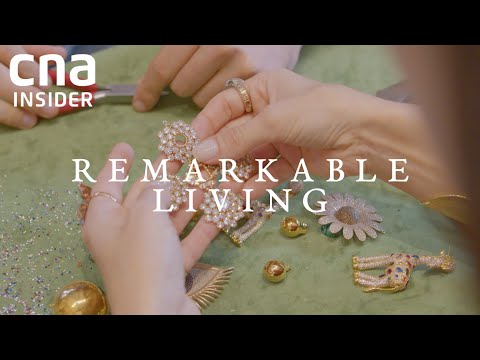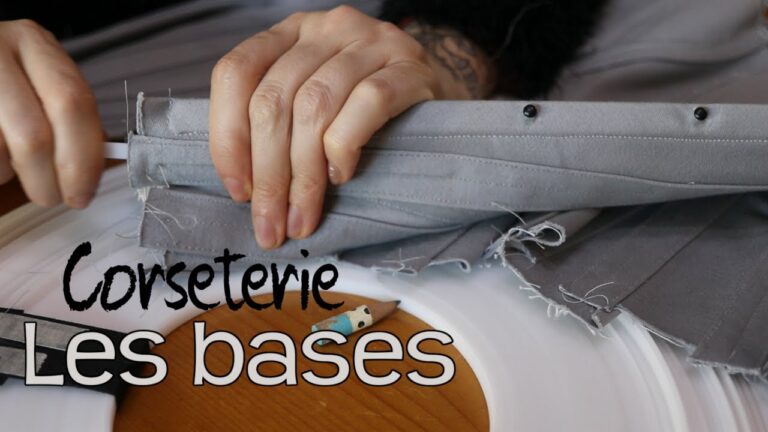Jewellery Designer: Job Description & Salary
Jewellery Designer Job Description
A jewellery designer is responsible for creating and designing unique and beautiful pieces of jewellery. They use their artistic skills and creativity to develop designs that are both aesthetically pleasing and marketable. Jewellery designers work closely with clients or manufacturers to understand their preferences and requirements, and then transform those ideas into tangible designs. They use various techniques such as sketching, computer-aided design (CAD), and 3D modeling to bring their designs to life. Additionally, jewellery designers are also responsible for selecting and sourcing materials, such as gemstones, metals, and beads, to be used in their designs. They may also collaborate with other professionals, such as gemologists or metalworkers, to ensure that the final product meets the desired quality and specifications.
Jewellery Designer Salary
The salary of a jewellery designer can vary depending on various factors such as experience, skill level, location, and employer. On average, a jewellery designer can expect to earn a salary ranging from $40,000 to $80,000 per year. Entry-level designers typically start at the lower end of this range, while experienced designers with a strong portfolio and reputation in the industry can earn higher salaries. Additionally, some jewellery designers may also earn additional income through freelance work or by selling their own designs. The salary of a jewellery designer can also increase with years of experience and by working for prestigious jewellery brands or high-end clients. Overall, the salary of a jewellery designer reflects their talent, creativity, and ability to create unique and marketable designs.

Jewellery Designer Job Description Template
Jewellery Designer Job Description
A jewellery designer is a professional who creates unique and beautiful pieces of jewellery. They use their artistic skills and knowledge of different materials to design and produce jewellery that meets the needs and preferences of clients.
One of the most important aspects of a jewellery designer’s job is to stay updated with the latest fashion trends and market demands. They need to have a good understanding of different styles, materials, and techniques used in jewellery making. This helps them in creating designs that are not only visually appealing but also marketable.
A jewellery designer is responsible for sketching and creating prototypes of their designs. They work closely with clients to understand their requirements and preferences, and then develop designs that meet their expectations. They may also have to make modifications to the designs based on client feedback.
Once the design is finalized, a jewellery designer oversees the production process. They work with skilled craftsmen and artisans to bring their designs to life. They may also have to select and source materials such as gemstones, metals, and beads for the production of jewellery.
In addition to designing and producing jewellery, a jewellery designer may also be responsible for marketing and promoting their creations. This includes attending trade shows, showcasing their designs to potential clients, and building relationships with retailers.
In summary, a jewellery designer is a creative professional who designs and produces unique pieces of jewellery. They play a crucial role in the jewellery industry by combining their artistic skills with market knowledge to create beautiful and marketable designs.
Jewellery Designer Responsibilities
Jewellery Designer Requirements
How Much Does A Jewellery Designer Make?
Jewellery Designer Salary
| Experience Level | Average Salary |
|---|---|
| Entry Level | $30,000 – $40,000 per year |
| Mid-Career | $40,000 – $60,000 per year |
| Experienced | $60,000 – $80,000 per year |
| Senior | $80,000 – $100,000+ per year |
A jewellery designer is a professional who creates and designs various types of jewellery pieces. They use their creativity and knowledge of materials to craft unique and stunning designs. The salary of a jewellery designer can vary depending on their experience level. Entry-level designers can earn an average salary of $30,000 to $40,000 per year. As they gain more experience and skills, their salary can increase to $40,000 to $60,000 per year in mid-career. Experienced designers with a strong portfolio and reputation can earn $60,000 to $80,000 per year. Senior jewellery designers who have established themselves in the industry can earn $80,000 or more per year. It’s important to note that these salary ranges can vary based on factors such as location, employer, and demand for jewellery designers.
Jewellery Designer Salaries by Country
Top Paying Countries for Jewellery Designer
| Country | Average Salary (USD) |
|---|---|
| Switzerland | 100,000 |
| United States | 80,000 |
| United Arab Emirates | 75,000 |
| Australia | 70,000 |
| United Kingdom | 65,000 |
A jewellery designer’s salary can vary greatly depending on the country they work in. This table showcases the top paying countries for jewellery designers based on average salaries in USD. Switzerland takes the lead with an average salary of $100,000, followed by the United States with $80,000. The United Arab Emirates, Australia, and the United Kingdom also offer competitive salaries for jewellery designers. It’s important to note that these figures are averages and individual salaries may vary based on factors such as experience, skill level, and the specific company or industry they work in.
A video on the topic Jewellery Designer
Interview Questions for Jewellery Designer
1. Can you tell us about your background and how you became a jewellery designer?
I have always had a passion for art and creativity, which led me to pursue a degree in Fine Arts. During my studies, I discovered my love for jewellery design and decided to specialize in this field. I took various courses and workshops to further enhance my skills and knowledge in jewellery design, and eventually started my own business.
2. What inspires you when creating new jewellery designs?
I find inspiration in various sources such as nature, architecture, culture, and even everyday objects. I love observing patterns, textures, and colors in my surroundings, and try to incorporate those elements into my designs. I also find inspiration in different cultures and their traditional jewellery designs.
3. How do you approach the design process for a new piece of jewellery?
First, I gather ideas and inspiration from my surroundings. Then, I sketch out rough designs and choose the materials that I want to work with. Next, I create a prototype or a 3D model to visualize the final piece. Once I am satisfied with the design, I start crafting the jewellery using various techniques such as soldering, stone setting, and polishing.
4. What materials do you prefer to work with and why?
I love working with precious metals like gold and silver as they provide durability and a timeless appeal to the jewellery pieces. I also enjoy incorporating gemstones in my designs to add color and sparkle. In addition to traditional materials, I also experiment with alternative materials like resin, acrylic, and wood to create unique and contemporary designs.
5. How do you stay updated with the latest trends in jewellery design?
I attend industry events, fashion shows, and exhibitions to stay updated with the latest trends in jewellery design. I also follow fashion magazines and online platforms dedicated to jewellery design. Networking with other designers and attending workshops or seminars also helps me stay informed about the current trends in the industry.
6. Can you describe your design style or signature aesthetic?
My design style can be described as contemporary and minimalist with a touch of elegance. I strive to create pieces that are both timeless and unique, with attention to detail and craftsmanship. I believe in creating jewellery that can be worn every day and can be passed down through generations.
7. How do you ensure the quality and durability of your jewellery pieces?
I pay great attention to the quality of materials used in my jewellery pieces. I source materials from reputable suppliers who provide certified metals and gemstones. I also employ skilled artisans who have expertise in various jewellery-making techniques. Additionally, I conduct thorough quality checks at each stage of the production process to ensure the durability and longevity of my jewellery.
8. Do you collaborate with clients to create custom-designed jewellery?
Absolutely! I love collaborating with clients to create custom-designed jewellery that reflects their personal style and preferences. I believe that jewellery should be a reflection of one’s individuality, and working closely with clients allows me to create pieces that are truly unique and meaningful to them.
9. What has been your most memorable jewellery design project so far?
One of my most memorable jewellery design projects was creating a custom engagement ring for a client. The client had a specific vision in mind, and I worked closely with them to bring that vision to life. Seeing the joy and excitement on their faces when they saw the final piece was incredibly rewarding and memorable for me.
10. What advice do you have for aspiring jewellery designers?
My advice for aspiring jewellery designers is to never stop learning and experimenting. Take advantage of every opportunity to enhance your skills and knowledge in jewellery design. Build a strong network within the industry and seek feedback from fellow designers and mentors. Lastly, believe in yourself and your unique design aesthetic, and always strive for excellence in your craftsmanship.






